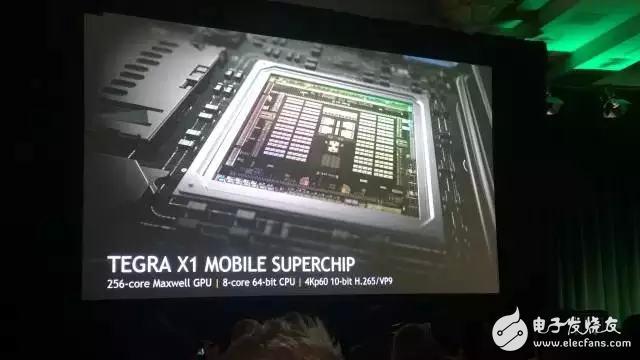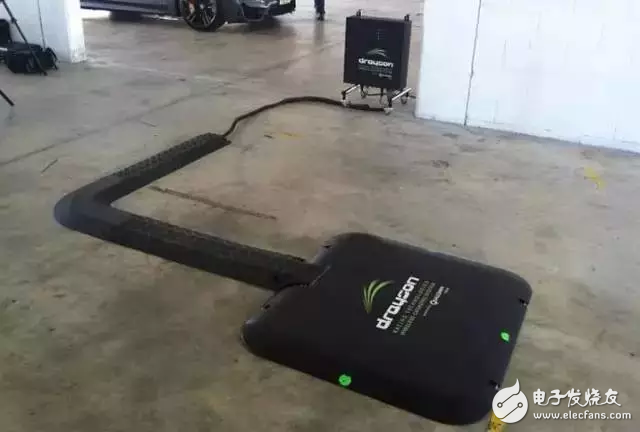In July 2014, on a closed highway in Florida, Governor Rick Scott sat in an autonomous Audi A7 at 40km/h. Just a year later, Audi announced that it will use the more advanced Tegra X1 chip. This chip has machine learning features that will give cars a true "thinking" ability. This is the second time that Audi has applied Tegra 2 to production cars in 2012. In the same year, Tesla's Model S began mass production. The car is also equipped with two Tegra series chips.
NVIDIA: Car intelligence is divided into three steps
In the era of automotive intelligence, Nvidia has found new business growth points. This process will generally take three steps:
The first step is to enter the dashboard and the central control panel. In particular, the instrument panel is gradually transitioning from a mechanical dial to an LCD dial. More and more models, directly replacing the instrument panel with a shaped TFT screen. It seems to be a transition from a mechanical watch to an electronic watch. Because the instrument panel carries key information such as speed, speed, and gear, the requirements for the GPU are very high: first, ensure the frame rate, and secondly ensure the rendering effect.
The second step is to enter the bus system of the car. The bus system, like the most popular CAN protocol, as well as MOST, FlexRay, LIN, etc., constitutes the local area network of the car, connecting hundreds of ECUs together. In this LAN, there will be a large amount of data computing requirements. The simplest example is the shifting logic problem of the automatic gearbox.
In the past, the gearbox was used to judge the ups and downs according to the depth of the accelerator pedal and the brake pedal. However, the application of GPS and the intervention of big data principle can make gearbox shifting more intelligent, which requires an onboard CPU to complete the calculation.
The third step is to enter the automatic driving system. For example, the Audi A7's self-driving prototype is equipped with a Tegra K1 chip to calculate the huge data generated by autonomous driving. The chip is located on the zFAS main board at the trunk of the vehicle. It is responsible for calculating the data from the camera and various sensors, and outputting the results to tell the car what to do.

Tegra X1 chip, more powerful computing performance, will be applied to Audi's future autonomous driving models
The Tegra K1 chip has a quad-core ARM Cortex CPU built in, as well as a 192-core Kepler-based GPU. The Audi A7 is the first application case of the chip in the car. In addition, K1 is mainly used in consumer electronics, such as NVIDIA Shield tablet, Xiaomi's MiPad, Acer's Chromebook 13 and so on.
Can not be ignored, the car will become another new continent of Tegra chips. According to IHS forecasts, global passenger vehicle sales will reach 88.6 million units in 2015. In addition, according to StaTIsta, tablet shipments will be 332 million units in 2015. There is no doubt that the car will become another mobile platform for mobile phones, tablets, PCs, and TV sets for huge growth rates and retention.
Qualcomm: Wi-Fi charging is more promising
In the first season of Formula E, the BMW i8 used to make a safety car won a lot of attention. The car is equipped with Halo wireless charging technology provided by Qualcomm. Next, this technology will also be applied to the Formula E F1 car.
Qualcomm is mainly known for semiconductor devices such as mobile communications and microprocessors. But you must know that Qualcomm is at the global leading level in the field of wireless charging, especially wireless charging of electric vehicles. In 2012, Qualcomm jointly established the A4WP Radio Energy Alliance. At present, Qualcomm's Halo wireless charging technology has signed cooperation with companies such as Renault, BMW and Formula E.
The basic principle of wireless charging technology is electromagnetic induction. Currently popular is the Qi standard, which was developed by the WPC Alliance. Qualcomm's Halo technology, including its WiPower technology for wireless charging of electronic products, is based on a Rezence standard. Rezence is customized by the A4WP Alliance mentioned above. For wireless charging of electric vehicles, the biggest problem at present is energy conversion efficiency. Compared to cable charging, wireless charging has a large amount of power that is converted into heat in the transfer path of the BCU (base) and VCU (vehicle). The efficiency is greatly reduced, about 40%.

Qualcomm's electric vehicle wireless charging system (WEVC)
For example, take the Nissan Leaf electric car as an example. The car battery pack has 24kWh. If you use wireless charging, it takes 1 hour to get 20kW. This seems ok, but it loses a lot of energy in the middle. In fact, because wireless charging has no intermediate medium, theoretically under ideal conditions, the charging efficiency should be higher than the line charging. Line charging efficiency is generally between 70% and 80%. At present, companies have demonstrated wireless charging with an efficiency of up to 98%.
Go back to Qualcomm Halo. The research on wireless charging will undoubtedly make Qualcomm have cooperation chips in the car factory. The BMW i8 safety car is the result of Qualcomm executives going to the "case" BMW executives. Although there is still a certain amount of time from a wide range of civilians, wireless charging can already play a role in specific situations. For example, Formula E, a wireless charging base can be placed on the bottom of the track. This way you don't have to change cars back and forth. Because an electric F1 battery can only run for 20 minutes.
Blackberry: CarPlay is actually standing on our shoulders
When Apple's CarPlay came out, the media exposed its cooperation with the BlackBerry. Because CarPlay signed a car, it is basically a customer of BlackBerry's QNX system. So Apple and Blackberry jointly developed CarPlay. BMW, Audi, Volvo, Hyundai, Ferrari, etc., most of the car brands of the car system are based on the QNX system.

Audi's TFT dashboard is based on the QNX-based Car Platform architecture.
QNX's market share in in-vehicle systems has exceeded 70%. Leading Microsoft's Windows Embedded AutomoTIve, as well as Linux. In addition, Ford, the main customer of Microsoft's WEA platform, will also turn to the QNX platform. This Car Platform is an in-vehicle entertainment information system solution for QNX. It includes the QNX Neutrino real-time system, mobile communication module, noise reduction system, HMI (Human Machine Interface) solution that supports Qt and HTML5. Audi's new TFT dashboard has made a good advertisement for the QNX platform.
YJVFT series mine explosion-proof and intrinsically safe high-voltage VFD Motor is a highly integrated product of motor and variable frequency integrated machine. The Inverter Motor is applicable to belt conveyors, transfer machines, scraper conveyors, emulsion pumping stations and other coal mines that match the motor and the size of the connection. The Integral Drive Systems can realize the device's heavy-duty soft start, dynamic speed control and other functions.
VFD Motor
VFD Motor, Inverter Motor, Integral Drive Systems, VFD Motor Combo, VFD For 3 Phase Motor, VFD Motor Controller
FGI SCIENCE AND TECHNOLOGY CO., LTD , https://www.fgi-tech.com
